Hospitals face intense budget pressure, making low-priced equipment very appealing. However, a race to the bottom on price can introduce hidden risks in quality and support. Understanding the dynamics of a price war is crucial for making smart procurement decisions.
Price wars impact affordability and innovation, but also threaten quality and market stability. This analysis covers these dynamics and stresses a value-based approach for sustainable growth in the industry.
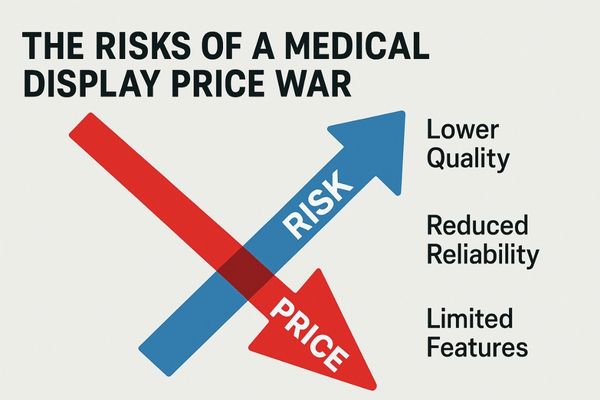
A price war in any industry is a complex event with far-reaching consequences. In the field of medical technology1, the stakes are significantly higher. The balance between cost-effectiveness and patient safety is a delicate one. When manufacturers compete primarily on price, it can trigger a chain of events that affects everyone from the company’s R&D lab to the hospital’s operating room. For procurement managers2, navigating this landscape requires looking beyond the initial price tag to understand the deeper implications for quality, innovation, and long-term market stability. We will now explore these multifaceted effects in detail.
Lower Prices Increase Accessibility but Reduce Profit Margins
High-end medical displays can seem out of reach for budget-constrained facilities. A price war makes them more affordable, but this comes at a long-term cost. Lower prices expand immediate access to better technology for more hospitals.
Price wars make advanced monitors available to more hospitals, improving patient care. However, the resulting lower profit margins can stifle future research and development, threatening long-term innovation.
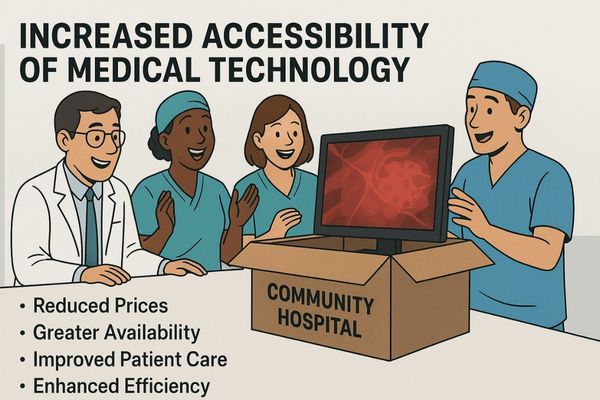
The most immediate and obvious benefit of a price war3 is increased affordability. When prices for high-performance displays fall, more healthcare institutions can access them. A community clinic might finally be able to upgrade from standard monitors to DICOM-compliant diagnostic displays4. A regional hospital could afford to equip its operating rooms with 4K surgical monitors, improving procedural accuracy. This democratization of technology enhances the standard of care for a wider patient population. However, this accessibility comes with a significant hidden cost. Severe price competition drastically shrinks profit margins for manufacturers. The funds allocated for research and development are often the first to be cut. This means less investment in creating the next generation of display technology, such as developing higher resolutions, smarter AI-driven features, or more efficient designs. While the MS247SA – 24" FHD Endoscopic Monitor becomes more accessible today, the development of its successor tomorrow is put at risk. A short-term win on budget can lead to a long-term slowdown in medical innovation.
Intense Competition Accelerates Technological Innovation
A stagnant market can lead to complacency and slow progress. Intense price pressure forces manufacturers to get smarter to survive. This fierce competition can become a powerful catalyst for meaningful technological advances.
To stand out in a price war, companies must innovate beyond price. This pressure drives advancements in features, performance, and manufacturing efficiency, ultimately benefiting the end-user with better products.
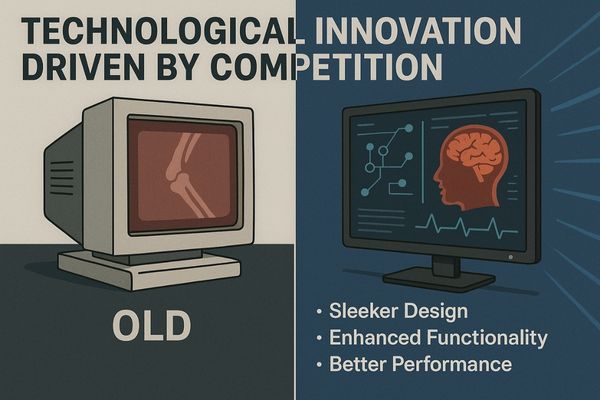
While price wars can threaten long-term R&D, they can also spark a different kind of innovation in the short term. When price is no longer a key differentiator, companies must find other ways to make their products stand out. This pressure forces them to add tangible value. Innovation shifts from theoretical research to practical application. This can manifest as improved ergonomic designs5 that reduce clinician fatigue, the integration of workflow-enhancing features like Picture-by-Picture, or the development of more efficient and longer-lasting LED backlight systems6. For example, a unique product like the MD51CHY – 34" 5MP Diagnostic Monitor for X-ray Imaging, with its specialized ultra-wide format, is a result of the drive to solve specific clinical problems in a new way. This competitive pressure also forces companies to innovate their own internal processes, optimizing supply chains and manufacturing to reduce costs without compromising on essential quality. The result is a more efficient industry that delivers more capable products.
| Feature Type | Innovation Example | Benefit to Clinician |
|---|---|---|
| Workflow | Dual-Screen Single Panel | Reduced clutter, seamless comparison. |
| Ergonomics | Low Blue Light Mode | Reduced eye strain during long sessions. |
| Efficiency | Smart Power Saving | Lower energy costs, greener facility. |
| Performance | AI-Assisted Calibration | Guaranteed image consistency. |
Price Wars Risk Undermining Product Quality and Reliability
An incredibly low price on a critical medical device often seems too good to be true. These deals can hide compromises that lead to equipment failures during critical moments. Understanding where manufacturers might cut corners helps avoid this risk.
To win a price war, some manufacturers may use lower-grade components, skip rigorous testing, or reduce after-sales support. This compromises the long-term reliability and safety of the device.
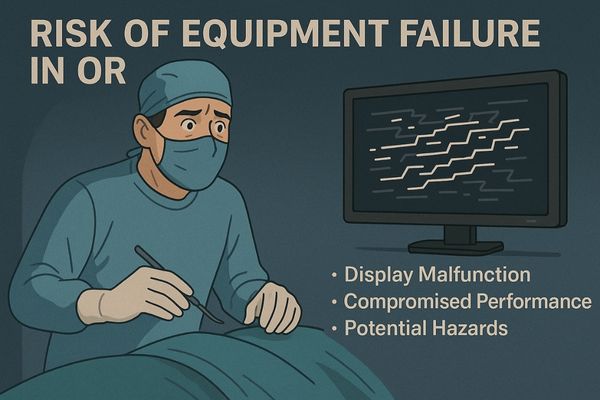
The most significant danger of a price war7 is the temptation for manufacturers to compromise on quality. When margins are razor-thin, cost-cutting measures can become unavoidable. This can happen in several critical areas. Some may choose lower-grade LCD panels, leading to problems with brightness uniformity, color accuracy, or dead pixels. Others might use cheaper power supplies or cooling components, increasing the risk of overheating and premature failure in the operating room. The quality control process itself might be shortened, with less time spent on burn-in testing and calibration verification for each unit. This directly jeopardizes the long-term reliability and consistency of the display. For a surgeon relying on a device like the MS270P – 27" FHD Surgical Display, an unexpected screen flicker or color shift is not a minor inconvenience; it is a direct threat to procedural safety. A low initial price is a poor substitute for the peace of mind that comes from proven reliability.
Market Consolidation May Result from Aggressive Pricing
A market with many diverse suppliers offers choice and spurs innovation. A prolonged price war can wipe out smaller, specialized companies. This leaves only a few giants to control the market.
Aggressive pricing strategies often push smaller or less efficient companies out of the market. This leads to consolidation, reducing choice for buyers and potentially leading to higher prices in the long run.
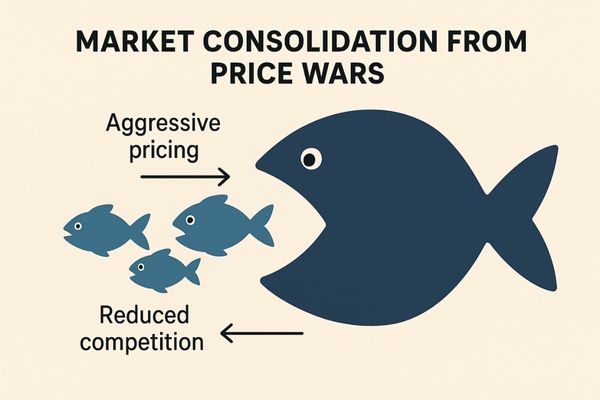
Not all manufacturers are equipped to survive a prolonged price war. Larger, global corporations with significant cash reserves and economies of scale can withstand lower profits for much longer than smaller, specialized firms. As a result, aggressive pricing can act as a powerful force for market consolidation8. Smaller companies, even those with highly innovative or best-in-class niche products, may be forced to exit the market. In the short term, this might seem beneficial to buyers as the remaining players compete fiercely. However, the long-term consequences are often negative. With fewer competitors, the market becomes an oligopoly. This reduces choice for hospitals and procurement managers. Once competition is diminished, the remaining large players have less incentive to innovate and may even raise prices. The loss of specialized firms that produce devices like the MD50C could leave certain medical fields with fewer tailored solutions. A diverse and competitive market is ultimately healthier for the end user.
Sustainable Growth Requires Balancing Price and Value
You are caught between a tight budget and the absolute need for quality equipment. Focusing only on the initial price tag can lead to costly long-term problems. The smartest strategy involves evaluating the total value, not just the upfront cost.
A healthy industry balances competitive pricing with true value. This means focusing on total cost of ownership, including reliability, performance, after-sales support, and technological longevity.
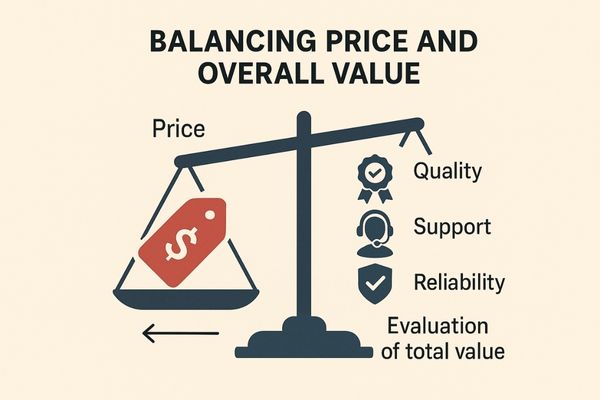
The most responsible approach for both manufacturers and buyers is to shift the focus from price to value. A healthy, sustainable medical display industry cannot be built on a race to the bottom. Instead, it must be built on a clear understanding of the total cost of ownership9. The initial purchase price is just one component. True value encompasses the entire lifecycle of the product. This includes the display’s performance and how it contributes to diagnostic confidence10. It includes its reliability and the cost of potential downtime. It also includes the quality of after-sales service and the responsiveness of technical support. A monitor like the MS321PC represents an investment in this total value. It is engineered not just to be competitively priced, but to deliver uncompromising performance and reliability for years. For sustainable growth, the industry must engage in healthy competition that drives value, not just cuts costs.
| Procurement Focus | Based On | Potential Outcome |
|---|---|---|
| Price Focus | Lowest initial cost. | High long-term costs due to failures, poor support. |
| Value Focus | Total cost of ownership, reliability, performance, support. | Lower long-term costs, higher reliability, better ROI. |
Conclusion
A price war offers mixed results. While it improves accessibility, it risks harming innovation and quality. Sustainable industry progress depends on a shared commitment to long-term value over short-term price advantages.
📧 Want guidance on balancing cost and quality in medical display procurement? Contact Martin at martin@reshinmonitors.com to explore Reshin’s value-driven solutions.
-
Exploring this link will provide insights into innovations and advancements in medical technology, crucial for understanding industry dynamics. ↩
-
This resource will offer valuable strategies and best practices for procurement managers, enhancing their decision-making in a competitive market. ↩
-
Understanding the impact of price wars can help you grasp the balance between affordability and innovation in healthcare technology. ↩
-
Exploring DICOM-compliant displays will reveal their crucial role in enhancing diagnostic accuracy and patient care. ↩
-
Exploring this link will reveal how ergonomic designs enhance user experience and reduce fatigue, crucial for product innovation. ↩
-
This resource will provide insights into the advantages of LED backlight systems, showcasing their role in enhancing product longevity and performance. ↩
-
Understanding the implications of a price war can help manufacturers maintain quality and avoid pitfalls. ↩
-
Exploring market consolidation will reveal its implications on consumer options and industry innovation. ↩
-
Understanding total cost of ownership helps manufacturers and buyers make informed decisions, ensuring long-term value and sustainability. ↩
-
Exploring the link between display performance and diagnostic confidence can enhance your understanding of quality in medical displays. ↩



